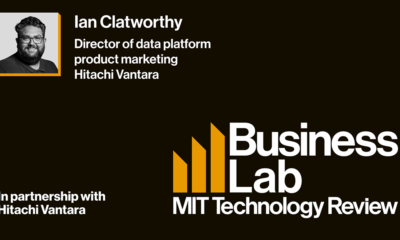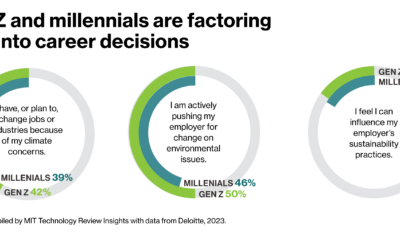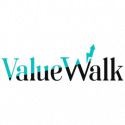Politics
What is the MACH-6? How to Use it to Optimize Your Content Strategy
Published
7 months agoon
By
Drew Simpson
Digital assets are the foundation of modern marketing, presenting a variety of formats to tell a brand’s story and engage with clients. However, quantifying and organizing digital assets can be overwhelming, especially as brands try to keep up with new channels and trends. With each new piece of content generated, how much of the older assets become lost or forgotten, collecting digital dust in the process?
As marketers, we create large volumes of digital content. In fact, nearly 329 million terabytes of data are created each day.
Picture your brand’s digital landscape. What does it look like? Is it overwhelming consumers’ feeds with unwanted noise, or is it delivering useful resources they’re looking for?
To connect with consumers before they even enter their brand’s ecosystem, marketers need a way to paint a clear picture of their digital library, visualizing existing assets and forming connections between them. This also allows brands to organize their assets within a control hierarchy and see opportunities to grow or scale back to strengthen their brand footprint and more effectively promote their message.
So, what’s the most effective way to organize a brand’s asset stack? The MACH-6.
Meet the MACH-6
The MACH-6, or 6-Level Marketing Asset Control Hierarchy, is an organizational framework for brands, helping them gain clarity of their assets according to a hierarchical stack determined by the degree of control a brand has over them.
The MACH-6 is a tool for owned asset optimization (OAO), providing brands with a holistic view of their digital footprint. Discovering opportunities to expand reach through atomizing content or creating entirely new owned assets becomes easier.
In short, the MACH-6 allows brands to establish an asset-first approach to satisfy the needs of their audience, building meaningful relationships in the process.
Understanding the content hierarchy
As marketers, most of us are familiar with the varying degrees of control over our brand assets (wouldn’t it be great if we could guarantee news coverage of our brand would be entirely accurate and favorable?). The MACH-6 breaks these degrees of control into three categories: owned, managed, and leveraged. This organization helps brands recognize the level of control they have over their content.
Picture a table with six layers. The higher you go, the broader a brand’s reach, but the less control it has over the content. While losing control seems counterproductive to brand management, working up to this level is necessary to reach new audiences and draw more consumers in. However, this can only be successful when brands are ready to deploy a comprehensive library of owned assets to support and inform the content coming from the layers of leveraged and managed assets (and provide owned touchpoints for later transactions).
Owned Assets
The MACH-6 should be built from the bottom up so that brands can form a sturdy base with owned assets, which they have complete control over technically and creatively. This category is broken into three layers: foundation, ground level, and Tier 1.
This stack begins with brand basics like company values and purpose, brand language and visual identities, proprietary data and IPs, customer personas, marketing positioning, and executive and employee ambassadors. These assets build the strong foundation that the entire marketing strategy should be based upon. What consumer data can you use to inform content production? How should content be written? What purpose is an asset driving for your mission? All assets should be connected to this foundation to maintain consistent brand messaging and positioning.
Then, we move up to websites, including sub-brand websites, at the ground level and Tier 1 above, which includes pillar content, blog posts, tools, downloadable content, and corporate communications. These assets are fully controlled by the brand and create an external representation of the foundational base.
Managed Assets
Split into two layers — Tier 3 and Tier 4 — a brand’s managed assets are pieces of content that the team has some control over. The brand controls these messages, but channels that are not. Continuing from the three layers of owned assets, Tier 2 includes public relations, events and communications, social media, bylines, ads, and emails. While a brand technically owns and manages its emails and social media accounts, Instagram, Gmail, Microsoft, and other platforms and email marketing tools ultimately control how the content is delivered, creating some limitations.
Tier 3 encompasses company profiles and ally websites, organic search, sites like Wikipedia, and content syndication. Brands can strongly impact these assets with their lower MACH-6 layers but have less control over what content is, and how it’s shared.
Leveraged Assets
The top level of the MACH-6 structure focuses on influence and consists of user-generated and third-party content that brands can guide or direct in some ways but ultimately cannot control. Examples include affiliates and influencers, reviews, word-of-mouth communication, user-generated content, and news.
In reality, the stronger the owned assets a brand creates, the more controlled messaging the managed and leveraged channels have to pull from. That increases the chances that a brand’s preferred narrative is shared more often and to more consumers.
How to implement the MACH-6
With the MACH-6, brands can zoom out and assess their entire network of assets. This is a critical first step to organizing data and managing content, allowing brands to build a more effective strategy.
Regardless of a brand’s size, most will have a vast ecosystem of content that they have invested time, energy, money, and other resources to build. However, much of that content goes underused or becomes forgotten because it is improperly organized.
The MACH-6 allows brands to be better equipped to identify and understand their needs, sharing and creating the appropriate assets to help move them through the journey to conversion.
But how do you begin when approaching a mountain of assets?
Understand your audience
To organize your brand assets and prioritize your focus areas, you need to know what your target consumers are looking for and how you can provide it through your assets. Map out your consumer journey to understand what channels your audience uses, where they go for specific answers, what types of content they trust and use, etc. This will give you a blueprint to lay your current MACH-6 over to understand areas of opportunity for your brand better.
One note here — the consumer journey has changed. It’s no longer (and perhaps never was) a linear path. Ensure your journey map is current and honest, showing modern consumers’ complex and sometimes fragmented journeys.
Audit your assets
The ultimate goal of the MACH-6 is to help brands successfully implement an OAO strategy. Auditing your existing assets and understanding which level of the structure they belong in, will help you determine what you have too much or too little of in each of the layers and allow you to make adjustments where necessary.
Where do you have a gap in owned assets? How can you shift resources to expand certain tiers and perhaps reach new audiences throughout their journeys? This also allows you to ensure your brand’s messaging is communicated at every level of the MACH-6 — consistency that will help with your brand’s credibility and awareness.
Audits also include looking over financials and prioritization. How can you better pair your budget with your consumer journey and preferences? What pieces of content aren’t performing well and can be optimized to make a larger impact?
Understanding your digital landscape will give you a stronger strategy to connect with consumers and drive business results.
Build your foundation
First, ensure you have a strong base of branding. Educate your entire organization on your brand basics—your vision, mission, purpose, and values—and make any updates necessary before expanding your work to the full MACH-6. Then, don’t shy away from your brand’s foundation. This messaging should echo throughout all of your brand content, so don’t hesitate to proudly publicly share your brand basics, and always ensure your assets are connected to them.
Next, look to your Ground Level and Tier 1 owned assets — the key to a brand’s success online. Identify gaps in your owned assets and fill them with content that matches your brand’s foundation.
For example, if you don’t have any unique tools or downloadable information, consider ways you can better provide value to your consumers with guides or templates that support their journeys. Or, brainstorm ways to expand your digital footprint, like creating a new website for your brand to publish blogs, media, downloadables, and other assets that connect you to your core consumers, directly answering their questions and addressing their needs.
Regardless of reach, optimized owned assets are a brand’s most powerful tools, enabling brands to take action when necessary but maintain the creative and technical freedom to communicate and share their story.
Optimize your content
The MACH-6 is part of a larger marketing asset ecosystem that provides brands various opportunities to expand and reach more consumers. While essential for business growth, a more extensive reach requires relinquishing some control.
To balance your assets and maintain some control, ensure your brand’s owned assets are optimized to be discoverable. Use data-backed strategies to appeal to Google — focus on high-volume search keywords and questions, build author authority, and then create a consistent schedule for publishing new content. Or boost engagement and visibility by including unique visuals, questions, and how-to guides.
With a greater depth of owned resources optimized for visibility and user experience, more consumers, journalists, and publishers will find your brand and identify it as an authoritative voice in your area of focus.
This helps to solidify your brand’s messaging further and establish its tone, making it recognizable and influencing the narrative created by your leveraged assets in Tier 4. In fact, building a solid foundation of owned assets increases the effectiveness of managed and leveraged assets.
If you build it, they will come. So be prepared.
Many of us will recall a big news story or memorable Super Bowl ad when we think of successful marketing tactics. These draw a lot of attention and bring brands in front of more people than they would normally reach. But, brands have a limited window of opportunity to capitalize on the extra attention.
Without a framework of optimized owned assets that use data and branding to answer questions and proactively meet the rising demand, brands can miss out on the increased visibility, which will fizzle out as quickly as it appeared. Capturing attention is half the battle and people are more likely to continue researching a brand after a significant event.
When brands have a library of diverse assets built before this significant draw, the new audiences will have plenty of touchpoints to learn about the brand and make connections. This will help create brand awareness, establish trust, build brand loyalty, and convert customers. In fact, Kia recently demonstrated just that.
By auditing, organizing, and balancing the content in a brand’s vast collection of digital assets, a brand is better equipped to create and share a steady stream of touchpoints to reach a broad base of consumers. As the brand grows, so will its library and the opportunities to build awareness, connect with audiences, and ultimately convert sales.
The MACH-6 is a tool that helps brands organize and visualize their asset stack to assess every potential consumer connection point and deploy the right content to the right people at the right time. This gives brands control over their owned assets at a foundational level that can transfer across all marketing assets and channels.
With the MACH-6, brands understand how their assets meet consumer needs and become empowered to make meaningful connections for the long term.
Featured Image Credit: Photo by Ketut Subiyanto; Pexels; Thank you!
RJ Licata
RJ Licata is the Sr. Director of Marketing at Terakeet, the Fortune 500’s preferred owned asset optimization (OAO) partner for strengthening brand and consumer connections.
With over 20 years of experience in the corporate, collegiate athletics, and small business marketing sectors, RJ guides Terakeet’s brand growth, protection, and expansion among its global business partners and growing employee base. He is a leading voice on the value of OAO as a dominant marketing strategy.
You may like
-


The inside scoop on watermarking and content authentication
-


Decarbonizing your data strategy
-


How to Write Quality Content for E-Commerce Website 10x Faster
-


Integrating sustainability into business strategy
-


The Drawbacks Of Using AI In Digital Marketing And Content Strategy
-


Using AI and Predictive Analytics to Enhance Podcast Content Strategy
Politics
Fintech Kennek raises $12.5M seed round to digitize lending
Published
7 months agoon
10/11/2023By
Drew Simpson
London-based fintech startup Kennek has raised $12.5 million in seed funding to expand its lending operating system.
According to an Oct. 10 tech.eu report, the round was led by HV Capital and included participation from Dutch Founders Fund, AlbionVC, FFVC, Plug & Play Ventures, and Syndicate One. Kennek offers software-as-a-service tools to help non-bank lenders streamline their operations using open banking, open finance, and payments.
The platform aims to automate time-consuming manual tasks and consolidate fragmented data to simplify lending. Xavier De Pauw, founder of Kennek said:
“Until kennek, lenders had to devote countless hours to menial operational tasks and deal with jumbled and hard-coded data – which makes every other part of lending a headache. As former lenders ourselves, we lived and breathed these frustrations, and built kennek to make them a thing of the past.”
The company said the latest funding round was oversubscribed and closed quickly despite the challenging fundraising environment. The new capital will be used to expand Kennek’s engineering team and strengthen its market position in the UK while exploring expansion into other European markets. Barbod Namini, Partner at lead investor HV Capital, commented on the investment:
“Kennek has developed an ambitious and genuinely unique proposition which we think can be the foundation of the entire alternative lending space. […] It is a complicated market and a solution that brings together all information and stakeholders onto a single platform is highly compelling for both lenders & the ecosystem as a whole.”
The fintech lending space has grown rapidly in recent years, but many lenders still rely on legacy systems and manual processes that limit efficiency and scalability. Kennek aims to leverage open banking and data integration to provide lenders with a more streamlined, automated lending experience.
The seed funding will allow the London-based startup to continue developing its platform and expanding its team to meet demand from non-bank lenders looking to digitize operations. Kennek’s focus on the UK and Europe also comes amid rising adoption of open banking and open finance in the regions.
Featured Image Credit: Photo from Kennek.io; Thank you!
Radek Zielinski
Radek Zielinski is an experienced technology and financial journalist with a passion for cybersecurity and futurology.
Politics
Fortune 500’s race for generative AI breakthroughs
Published
7 months agoon
10/11/2023By
Drew Simpson
As excitement around generative AI grows, Fortune 500 companies, including Goldman Sachs, are carefully examining the possible applications of this technology. A recent survey of U.S. executives indicated that 60% believe generative AI will substantially impact their businesses in the long term. However, they anticipate a one to two-year timeframe before implementing their initial solutions. This optimism stems from the potential of generative AI to revolutionize various aspects of businesses, from enhancing customer experiences to optimizing internal processes. In the short term, companies will likely focus on pilot projects and experimentation, gradually integrating generative AI into their operations as they witness its positive influence on efficiency and profitability.
Goldman Sachs’ Cautious Approach to Implementing Generative AI
In a recent interview, Goldman Sachs CIO Marco Argenti revealed that the firm has not yet implemented any generative AI use cases. Instead, the company focuses on experimentation and setting high standards before adopting the technology. Argenti recognized the desire for outcomes in areas like developer and operational efficiency but emphasized ensuring precision before putting experimental AI use cases into production.
According to Argenti, striking the right balance between driving innovation and maintaining accuracy is crucial for successfully integrating generative AI within the firm. Goldman Sachs intends to continue exploring this emerging technology’s potential benefits and applications while diligently assessing risks to ensure it meets the company’s stringent quality standards.
One possible application for Goldman Sachs is in software development, where the company has observed a 20-40% productivity increase during its trials. The goal is for 1,000 developers to utilize generative AI tools by year’s end. However, Argenti emphasized that a well-defined expectation of return on investment is necessary before fully integrating generative AI into production.
To achieve this, the company plans to implement a systematic and strategic approach to adopting generative AI, ensuring that it complements and enhances the skills of its developers. Additionally, Goldman Sachs intends to evaluate the long-term impact of generative AI on their software development processes and the overall quality of the applications being developed.
Goldman Sachs’ approach to AI implementation goes beyond merely executing models. The firm has created a platform encompassing technical, legal, and compliance assessments to filter out improper content and keep track of all interactions. This comprehensive system ensures seamless integration of artificial intelligence in operations while adhering to regulatory standards and maintaining client confidentiality. Moreover, the platform continuously improves and adapts its algorithms, allowing Goldman Sachs to stay at the forefront of technology and offer its clients the most efficient and secure services.
Featured Image Credit: Photo by Google DeepMind; Pexels; Thank you!
Deanna Ritchie
Managing Editor at ReadWrite
Deanna is the Managing Editor at ReadWrite. Previously she worked as the Editor in Chief for Startup Grind and has over 20+ years of experience in content management and content development.
Politics
UK seizes web3 opportunity simplifying crypto regulations
Published
7 months agoon
10/10/2023By
Drew Simpson
As Web3 companies increasingly consider leaving the United States due to regulatory ambiguity, the United Kingdom must simplify its cryptocurrency regulations to attract these businesses. The conservative think tank Policy Exchange recently released a report detailing ten suggestions for improving Web3 regulation in the country. Among the recommendations are reducing liability for token holders in decentralized autonomous organizations (DAOs) and encouraging the Financial Conduct Authority (FCA) to adopt alternative Know Your Customer (KYC) methodologies, such as digital identities and blockchain analytics tools. These suggestions aim to position the UK as a hub for Web3 innovation and attract blockchain-based businesses looking for a more conducive regulatory environment.
Streamlining Cryptocurrency Regulations for Innovation
To make it easier for emerging Web3 companies to navigate existing legal frameworks and contribute to the UK’s digital economy growth, the government must streamline cryptocurrency regulations and adopt forward-looking approaches. By making the regulatory landscape clear and straightforward, the UK can create an environment that fosters innovation, growth, and competitiveness in the global fintech industry.
The Policy Exchange report also recommends not weakening self-hosted wallets or treating proof-of-stake (PoS) services as financial services. This approach aims to protect the fundamental principles of decentralization and user autonomy while strongly emphasizing security and regulatory compliance. By doing so, the UK can nurture an environment that encourages innovation and the continued growth of blockchain technology.
Despite recent strict measures by UK authorities, such as His Majesty’s Treasury and the FCA, toward the digital assets sector, the proposed changes in the Policy Exchange report strive to make the UK a more attractive location for Web3 enterprises. By adopting these suggestions, the UK can demonstrate its commitment to fostering innovation in the rapidly evolving blockchain and cryptocurrency industries while ensuring a robust and transparent regulatory environment.
The ongoing uncertainty surrounding cryptocurrency regulations in various countries has prompted Web3 companies to explore alternative jurisdictions with more precise legal frameworks. As the United States grapples with regulatory ambiguity, the United Kingdom can position itself as a hub for Web3 innovation by simplifying and streamlining its cryptocurrency regulations.
Featured Image Credit: Photo by Jonathan Borba; Pexels; Thank you!
Deanna Ritchie
Managing Editor at ReadWrite
Deanna is the Managing Editor at ReadWrite. Previously she worked as the Editor in Chief for Startup Grind and has over 20+ years of experience in content management and content development.
